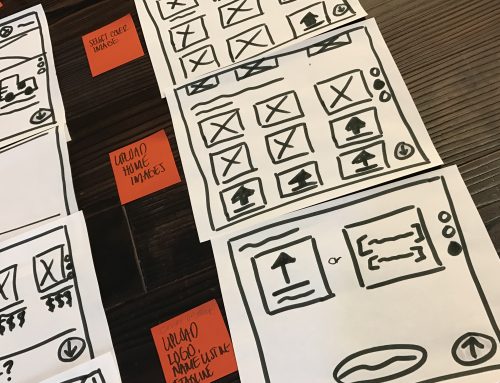I recently spoke to a group of recruiters who wanted to learn about what hiring managers look for when building out their design team. It was a timely discussion for me, since I’m presently building a team for a medium sized startup I thought I’d share the plan I proposed to them. I’ll be building a tightly functioning and scalable team that works equally well in a small shop, but will scale to even the largest software development company.
Over the next 12 months they’ll be adding 3-7 new products to their lineup, which means their present team of five designers, simply won’t be enough to handle all the work. But building a great in-house design department takes more than just adding new designers. They’ll need a scalable design team that will grow smartly as the company grows.
Creating the Core Team
As a rule, I am not a fan of generalists. That “web guy” or that “UX designer” that does everything from user research, to testing, to wire-framing to visual design. I know this Jack-of-all-Trades is a favorite among startups, because they believe they can get one person to do the job of three. Fine for betas and MVPs, but ultimately it does not result in a superior product. Instead, I prefer building core teams. A core team consists of a visual/UI designer and an interaction/UX designer. Ideally, there is a third person who is the design strategist–that expert in HCI, psychology–who provides the user research, testing and other guidance to the team. The core team works closely with each other and consistently on one or two products, learning it inside and out. Growing it intelligently and scalably. Planning for the future of the product while ensuring that what is live at the end of each sprint is pixel-perfect and as simple to use as possible.
Core Team Responsibilities
Teams must work as a single unit, sharing knowledge, feedback and ideas. This is an agile, iterative process and should by no means become waterfall. Here’s a job description for each member of my 3-person team:
UX Strategist – The strategist works with user feedback, research, focus groups, to identify and solve user problems. Conveys pain and friction points to the team, and collaborates on finding solutions. Works at the information architecture level to deliver flows and designs to the team and engineers.
Interaction Designer – IxDs work on interactions from screen to screen. They focus on the wireframe-level to solve step-by-step processes through an application, which may include mocking up functional click-throughs to demonstrate how an interaction happens. They deliver wireframes, including any animation or click-throughs to the engineers.
Visual Designer – The visual designer creates and maintains the visual design language for the app. Is the brand advocate, manages brand standards. Creates the visual specifications and assets that are delivered to the engineers. Follows through by doing the QA on features as engineers develop and release.
Managing and providing overarching guidance for all is the creative director.
Creative Director – the CD or Director of UX reviews all work for consistency with existing products and design standards. QAs the designs before delivery to engineering, then QAs what is built (after the team has approved it). Manages workflow within the team, socializes new features with the PMs and Engs, and advocates for the product design department.
Results
By reducing the waterfall method of hand-off and becoming more involved in the build, review, QA process, our teams reduce churn from product design through engineering and release.
With a single, core team dedicated to one product we’re able to spend more time on feature planning, design, and implementation. This increases the value of features implemented because designers will have the time to thoroughly ideate, process, finesse and work with Engineering on implementation.
Better socializing of new features and product improvements creates buy-in by the entire product and marketing team, which will then ensure that features are well built and communicated to customers. And that business goals become a regular part of the design strategy.
Building out the product design team will ensure that the workload is evenly divided, and that no member of the team is overwhelmed or left without work to do. This in turn will ensure that new products can be handled in our team and given the attention they need.






